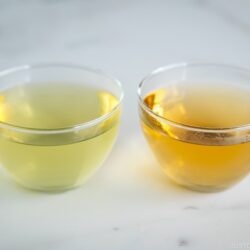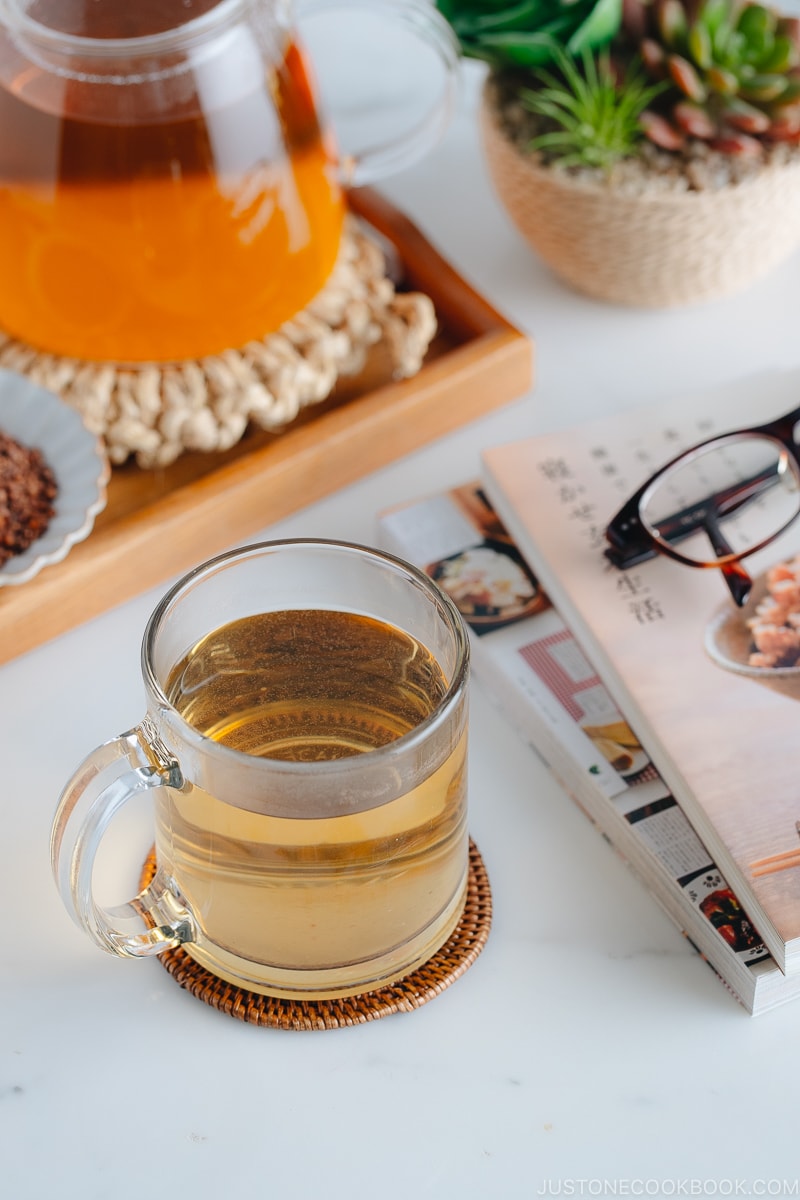
Do you want to add a new and healthy beverage to your diet? If yes, then you must try Buckwheat Tea or Sobacha (そば茶). The tea offers immense health benefits and it is absolutely one of our favorite beverages to relax and build up our immune system.
Of late, Mr. JOC and I have started drinking more non-caffeinated drinks like buckwheat tea. We still love our coffee and green tea, but we wanted to incorporate more simple yet healthy habits to keep our energy in check. Are you interested in knowing more about buckwheat tea? Keep reading this post!
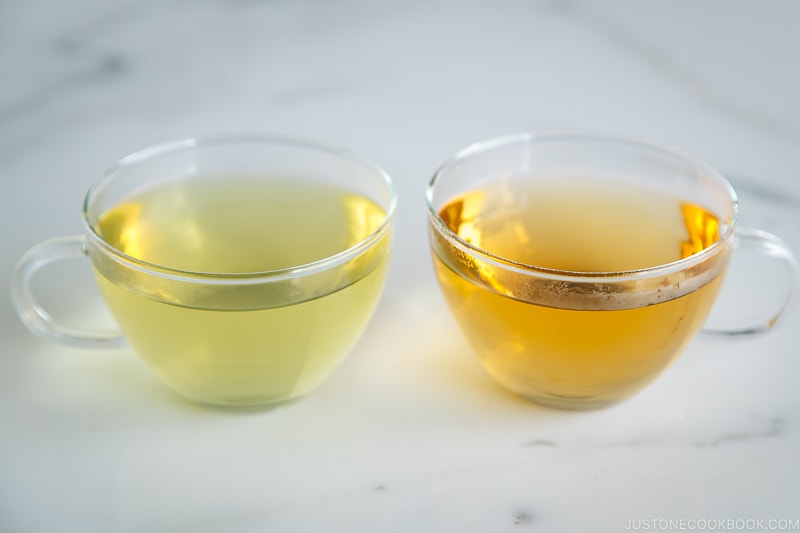
What is Buckwheat Tea (Sobacha)?
Buckwheat tea, known as sobacha (そば茶) or soba cha in Japan, is a beverage made from roasted buckwheat (soba 蕎麦,そば) grains, leaves, or flowers of the plant. The caffeine-free tea with a toasty flavor is consumed for enjoyment apart from health purposes.
Soba tea has a dry and nutty flavor, earthy taste, and light and toasty aroma. Brew the buckwheat tea just like any other tea and enjoy it as is without adding any sweetener or milk. You can serve either warm or cold. In today’s post, I’ll show you how to make the tea from grains.
Buckwheat Tea in Asia
Buckwheat tea is also known as memil-cha (메밀차) in Korea and kuqiao-cha (苦荞茶) in China. In the most recent development, tartari buckwheat grown in Gangwon Province in Korea is popular for making memil-cha, as it is nuttier and contains more rutin, a plant pigment found in certain fruits and vegetables that has powerful antioxidant properties.
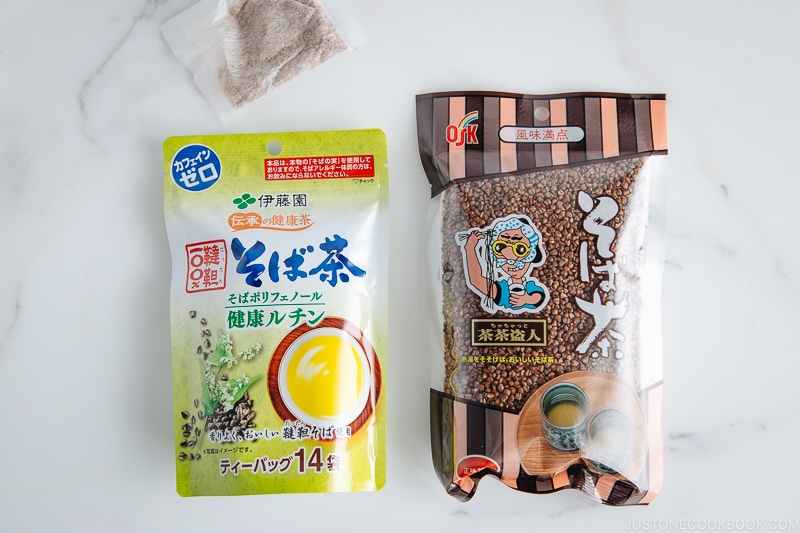
Ingredients for Buckwheat Tea
It only takes 2 ingredients to make this drink:
- roasted buckwheat grains – find it at Japanese or Asian markets, health food stores, or on Amazon
- water
How To Make Buckwheat Tea (Sobacha)
- Boil water in a saucepan on the stove or in an electric kettle.
- Add the roasted buckwheat grains and boil for 30 seconds.
- Transfer the grains and boiling water to a teapot.
- Steep for 3–4 minutes.
- Strain and serve hot.
- You can brew the same grains 2–3 more times, but add a few minutes to the steeping time.
*When making the tea from leaves and blossoms, add 1 to 2 tablespoons of dried tea to 1 cup of hot water and let steep for 5 to 10 minutes.
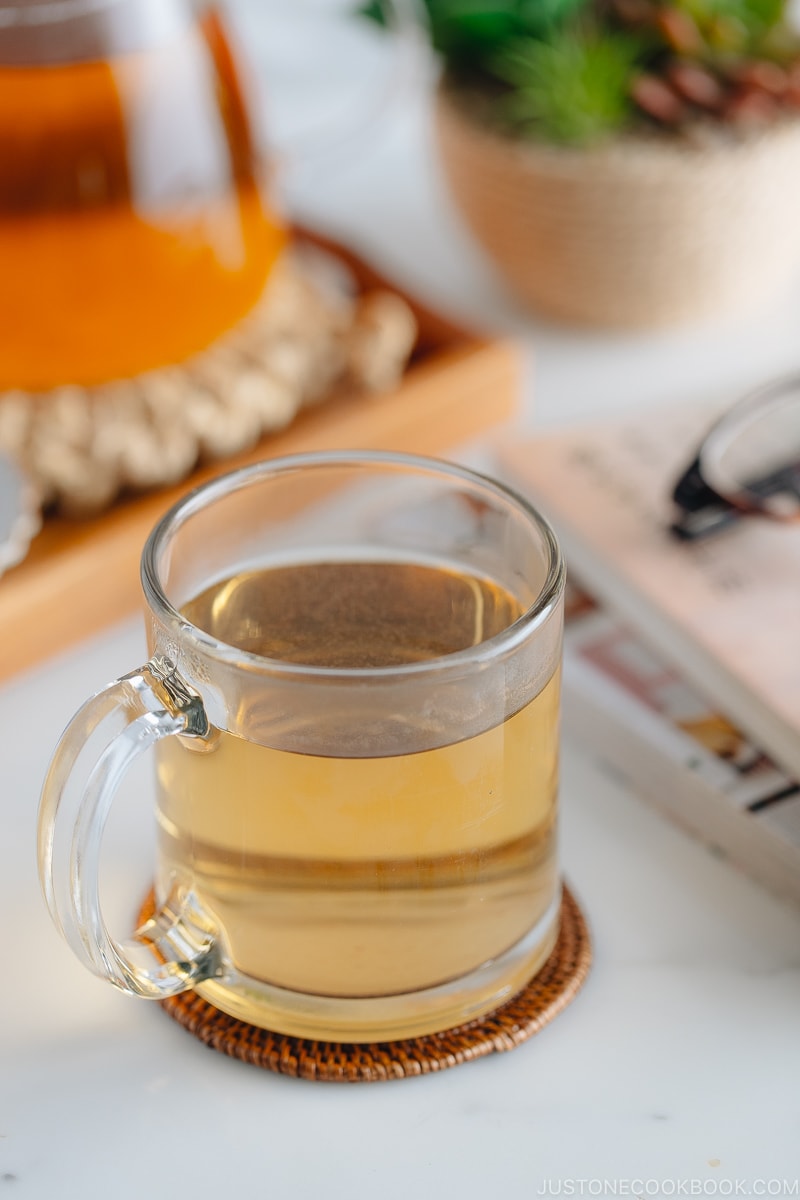
Possible Health Benefits of Buckwheat Tea
If you need to cut down on caffeine intake, buckwheat tea is a good alternative. There may be some impressive health benefits* to drinking sobacha, too. In a nutshell, here are some potential benefits I found online:
- Promotes weight loss – low in calories, stimulates metabolism, and eliminates water weight
- Aids the immune system – high in various antioxidants and vitamins/nutrients
- Aids digestion – antioxidants improve digestive function, eliminates bloating and constipation
- Improves heart health – lowers levels of blood pressure and cholesterol count
- Helps manage diabetes – reduces the concentration of glucose in the body
- Reduces kidney problems – antioxidants slow the progression of the condition
- Defends against cancer – helps defend against cellular mutation and the spread of cancer
* Note: Just One Cookbook does not specialize in health facts, so please do your own research to find out more about the health benefits of buckwheat tea.
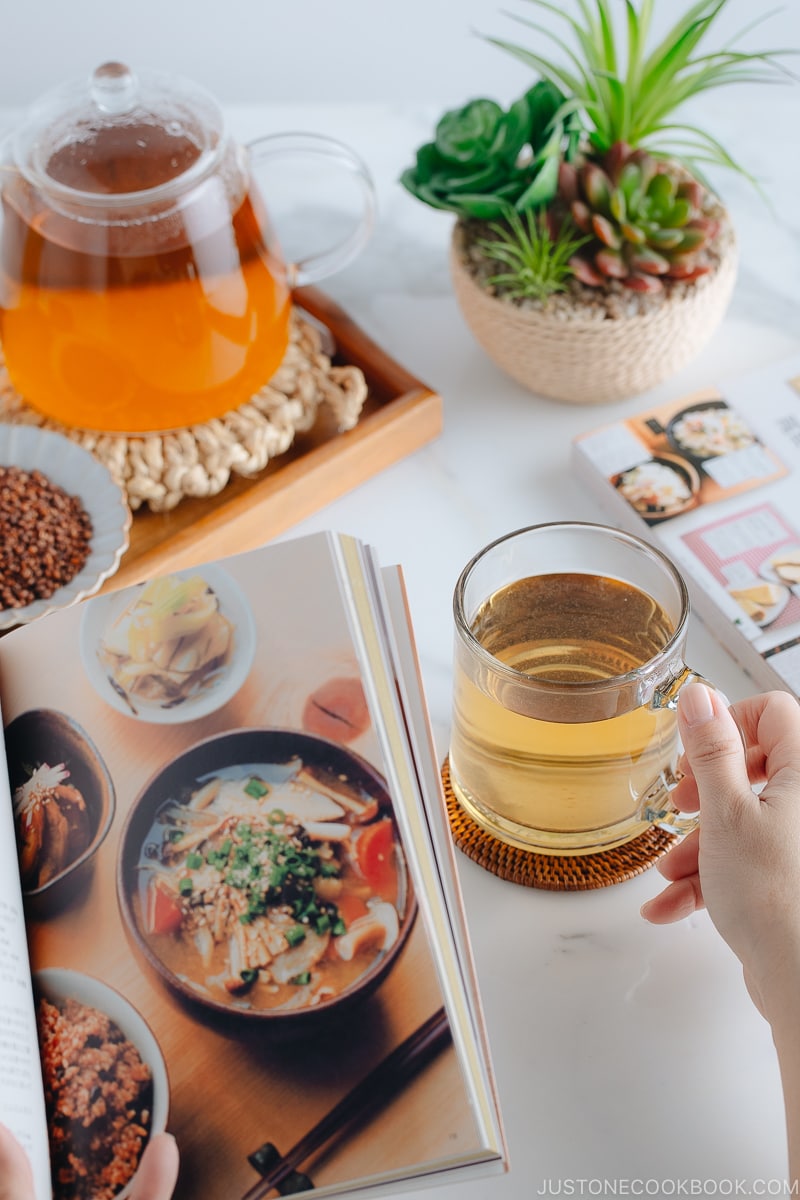
Potential Downsides
Consumption of buckwheat is not associated with many adverse health effects when consumed in moderation. However, some people may be allergic to buckwheat.
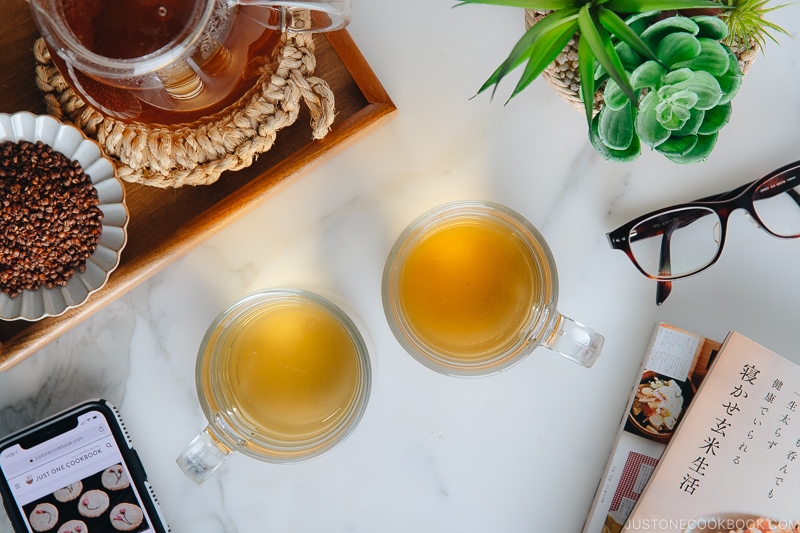
Perfect Tea for The Evening
I drink buckwheat tea for much more than the healthful compounds; I also enjoy its subtlety and calming relaxation it brings to my mind.
Since we tend to work late at night after our kids go to bed, we find ourselves battling to concentrate on the overwhelming to-do list. It is not exactly the wisest thing when we have to film recipes in the late evening. We get tempted by food and often find ourselves eating snacks to stay awake. With buckwheat tea, we are able to relax and concentrate better.
While I am not sure if I can successfully lose weight with buckwheat tea, I sure feel more energized and sleep better. Since it’s not caffeinated, it makes a great cup of tea to drink in the evening. It’s perfection! I hope you enjoy sobacha just like we do.
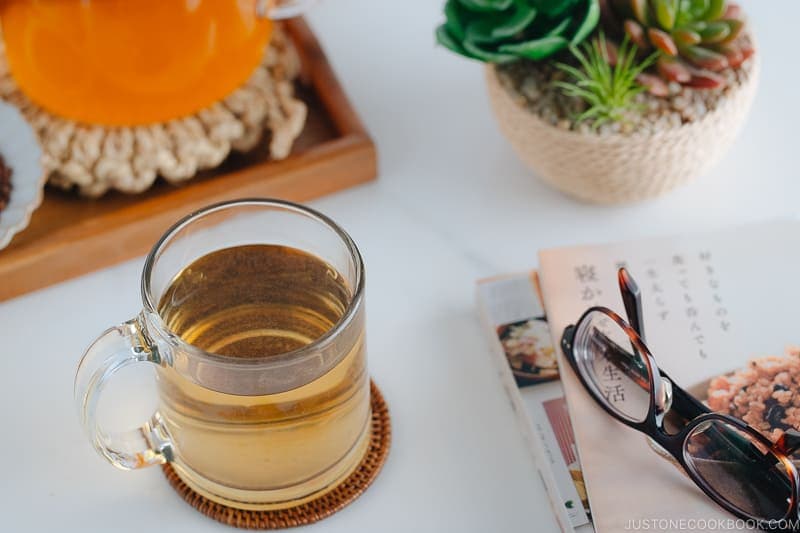
Wish to learn more about Japanese cooking? Sign up for our free newsletter to receive cooking tips & recipe updates! And stay in touch with me on Facebook, Pinterest, YouTube, and Instagram.
Buckwheat Tea (Sobacha)
Ingredients
For a Saucepan on the Stove
- 2 Tbsp buckwheat tea
- 3⅓ cups water
For a Teapot
- 2 Tbsp buckwheat tea
- 3⅓ cups water
For a Buckwheat Tea Bag
- 1 tea bag (you can purchase the brand I used on Amazon)
- ¾ cup water
Instructions
- Gather all the ingredients. Please adjust the amount of water (or buckwheat tea) based on your preference.

To Brew with a Saucepan on the Stove
- Boil 3⅓ cups water in a saucepan on the stove. Add 2 Tbsp buckwheat tea.
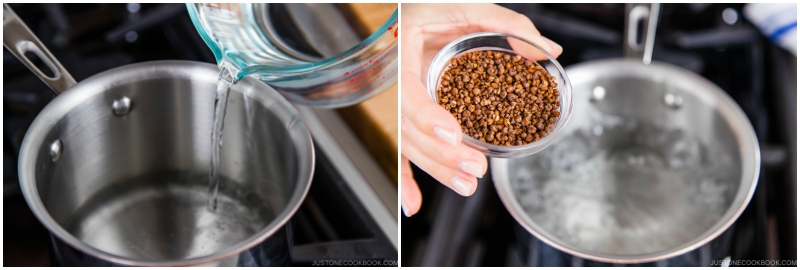
- Boil for 30 seconds and turn off the heat. Cover the saucepan with a lid and allow the tea to steep for 3–4 minutes.
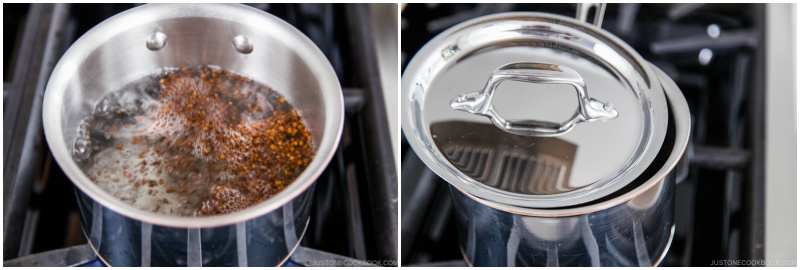
- Strain the tea through a fine-mesh sieve and serve hot.
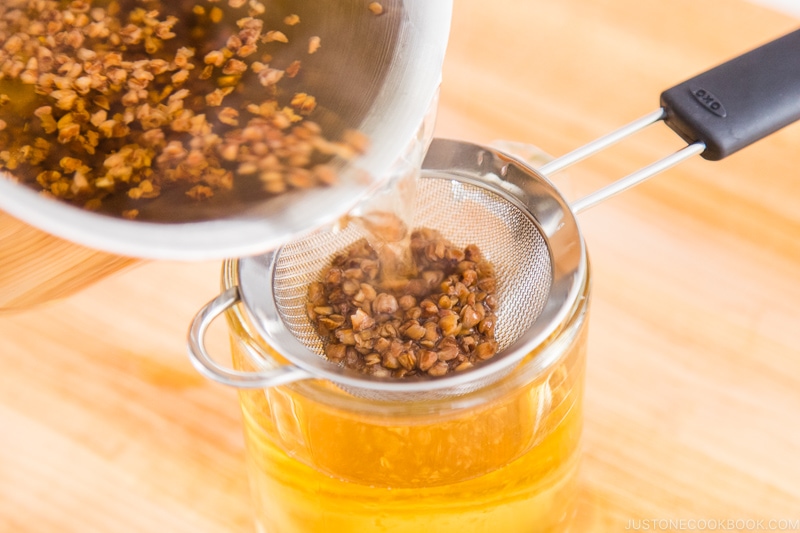
To Brew with a Teapot
- Boil 3⅓ cups water in an electric kettle or a saucepan on the stove. Add 2 Tbsp buckwheat tea grains to a teapot.
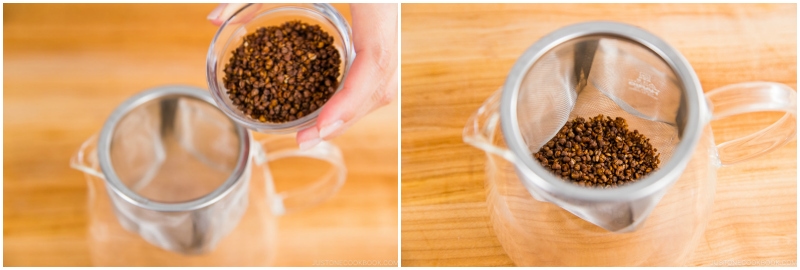
- Pour the boiling water over the buckwheat in the teapot. Allow the tea to steep for 3–4 minutes before straining.
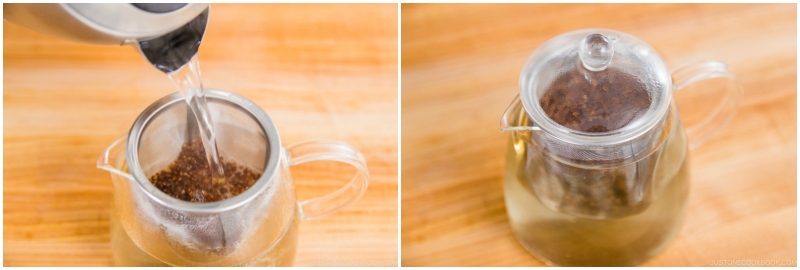
- Serve hot.
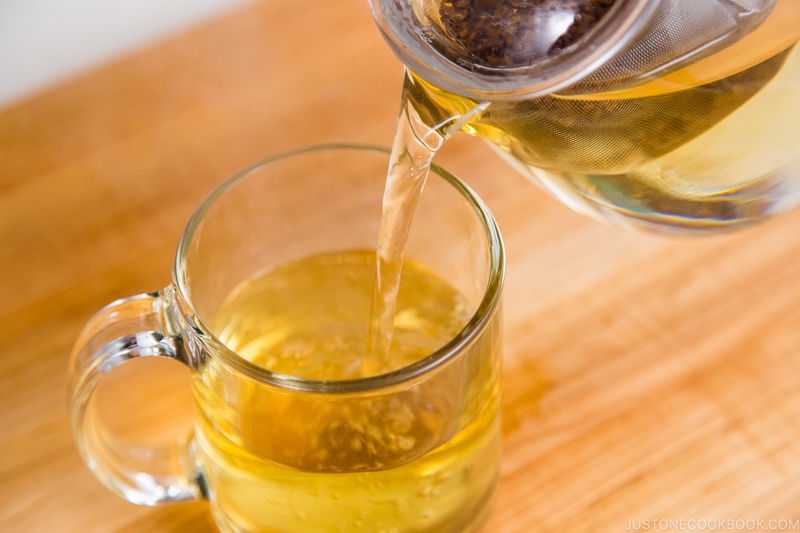
To Brew with a Tea Bag
- Boil ¾ cup water in an electric kettle or a saucepan on the stove. Add 1 tea bag of buckwheat tea in a teacup or teapot. Pour boiling water over the tea bag.
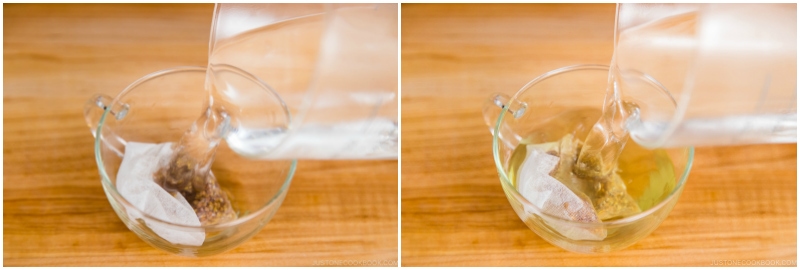
- Allow the tea to steep for 2 minutes before removing the tea bag. Serve hot.
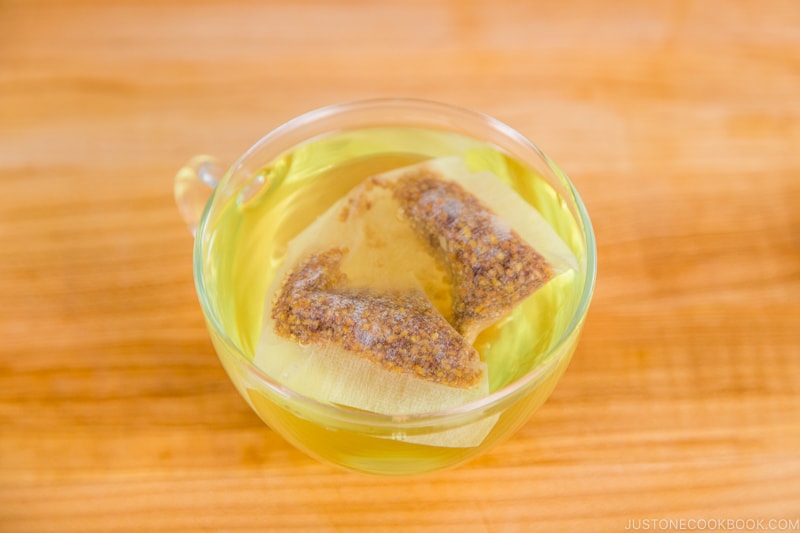
To Serve Cold
- Let the buckwheat tea cool to room temperature before storing in the refrigerator. Serve cold.
To Brew Again
- Brew more tea using the same buckwheat grains 2–3 more times, but add a few minutes to the steeping time.
Nutrition
Did you make this recipe?
Tag @justonecookbook on Instagram so we can see your delicious creation!


